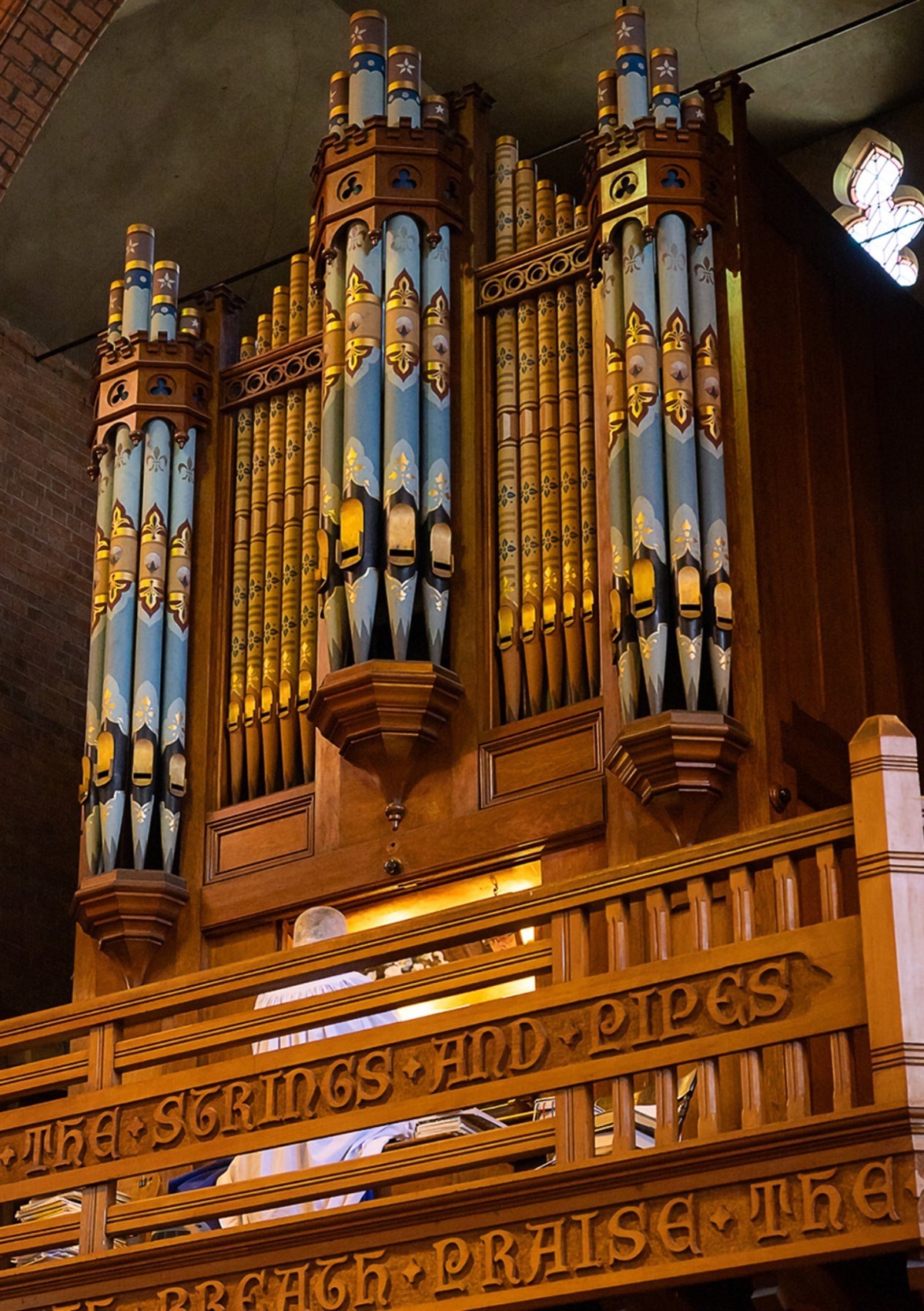Our Parish History
The first attempt to establish a British presence in northern Tasmania was at York Town on the west side of the Tamar River, but the location proved inadequate and Lieutenant Governor William Paterson moved the settlement to the present site of Launceston from the end of 1805. Early maps show a barracks located at the corner of George and Cameron Streets, now the site of Holy Trinity Church.The first parish church in the town, St John’s, had reached capacity by 1838 and it was decided that a new church should be built. Plans were drawn up by the former convict architect, James Blackburn. The Governor, Sir John Franklin, approved an application for the land in August 1839 and the church opened for worship on 27 September 1842. The first Rector (inducted in May 1844) was the Rev’d William Gibbon, the first of several short incumbencies before the 46 year ministry of the Rev’d Francis Hales.
It was towards the end of Hales’ time as Rector that the original church developed structural issues and work commenced on the current building designed by Alexander North. Opened in 1902, the present church was intended to be only stage one, consisting of the chancel, transepts, chapel and vestries. A ‘temporary’ corrugated iron wall (which stayed in place for 80 years!) covered the space where the nave and spire were to join, but these were never constructed. Financial constraints, two World Wars and a Depression all no doubt contributed to the delay, and by the 1980s it was clear that the building as planned would never be completed. The present narthex, office, kitchen and toilets have provided a very functional smaller scale alternative.
Extensive information about Holy Trinity’s pipe organ can be found here.

In addition to the traditional staples of Sunday services, Baptisms, Weddings and Funerals, the parish has featured many groups and activities through its history of some 180 years. These have included choirs, GFS (for girls), CEBS (for boys), women’s groups, men’s groups, Sunday Schools and servers guilds - each an attempt to meet the needs of the community at the particular time.
At various times the parish has also included the churches of St Barnabas’ - Alanvale, St George’s - Invermay, All Saints - Ravenswood, Holy Family - Inveresk, St Peter’s - St Leonards and All Souls - Patersonia. Some of these continued independently and others have been closed and sold over the years.
The parish currently incorporates St Andrew’s, Evandale, which has a service at 5.00pm each Sunday, St Matthias’, Windermere which has services twice a month (2nd and 4th) and on special occasions, and St James’, Franklin Village, where we are presently holding a service each Wednesday morning. We are committed to supporting each centre into the future, as they seek to faithfully serve the local communities in which they are placed.
As is true of every church, Holy Trinity has had its share of both prosperous and lean times. In more recent years, some of the housing in the parish has given way to commercial premises. People have therefore travelled in from the wider area and we have seen fewer families among the regular attenders. The changing nature of the local community has brought new challenges which stretch our resources. But the essential task of proclaiming Christ is unchanged and remains our priority.
War Memorial
Holy Trinity contains a historic and significant memorial to those who served in the Great War 1914-1919. For more about the stories of those commemorated on the memorial, see our dedicated site 165anzacs.org
Conservation

Holy Trinity is a red brick and sandstone church and is a fine example of the Federation Gothic Style. The 'Gothic' details include gargoyles, turrets, gables, buttresses and a fleche. The stained glass windows include three memorial windows imported from England for the first Holy Trinity Church on this site, built in 1842. Some years ago, an urgent need for conservation / restoration work to be carried out on the stained glass and the the carved sandstone led to the establishment of a Conservation Fund. Work of the kind necessary can only be carried out by expert craftsmen and is, necessarily, quite an expensive undertaking.
With the assistance of the National Trust of Australia, we are able to accept tax-deductible donations towards all such restoration work, and new projects are always on the horizon.
Conservation Funds are now in place for all four of our historic church buildings.
Please contact us for more information.